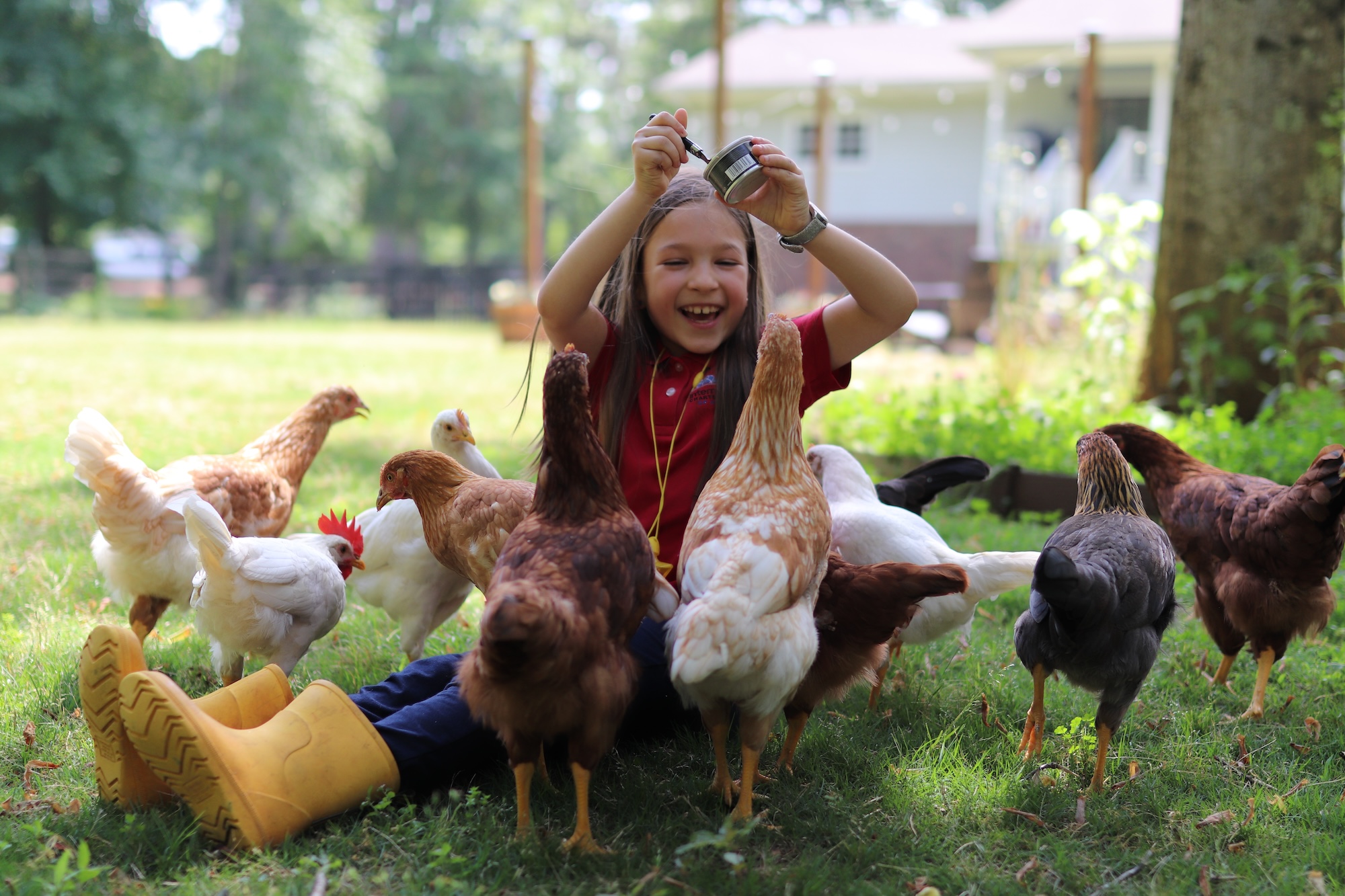We’ve been pasture-raising egg-laying chickens on our homestead since 2021, and have lost several birds to predators. Most of our losses were due to hawks, the dominant aerial predator in our area. In fact, we watched a hawk attack one of our white Leghorn pullets within a week of moving it from the brooder to the paddock.
That led us to try a number of methods for preventing hawk attacks, including most of the strategies mentioned in this article.
The Only Surefire Method: Keep Your Chickens Locked Up
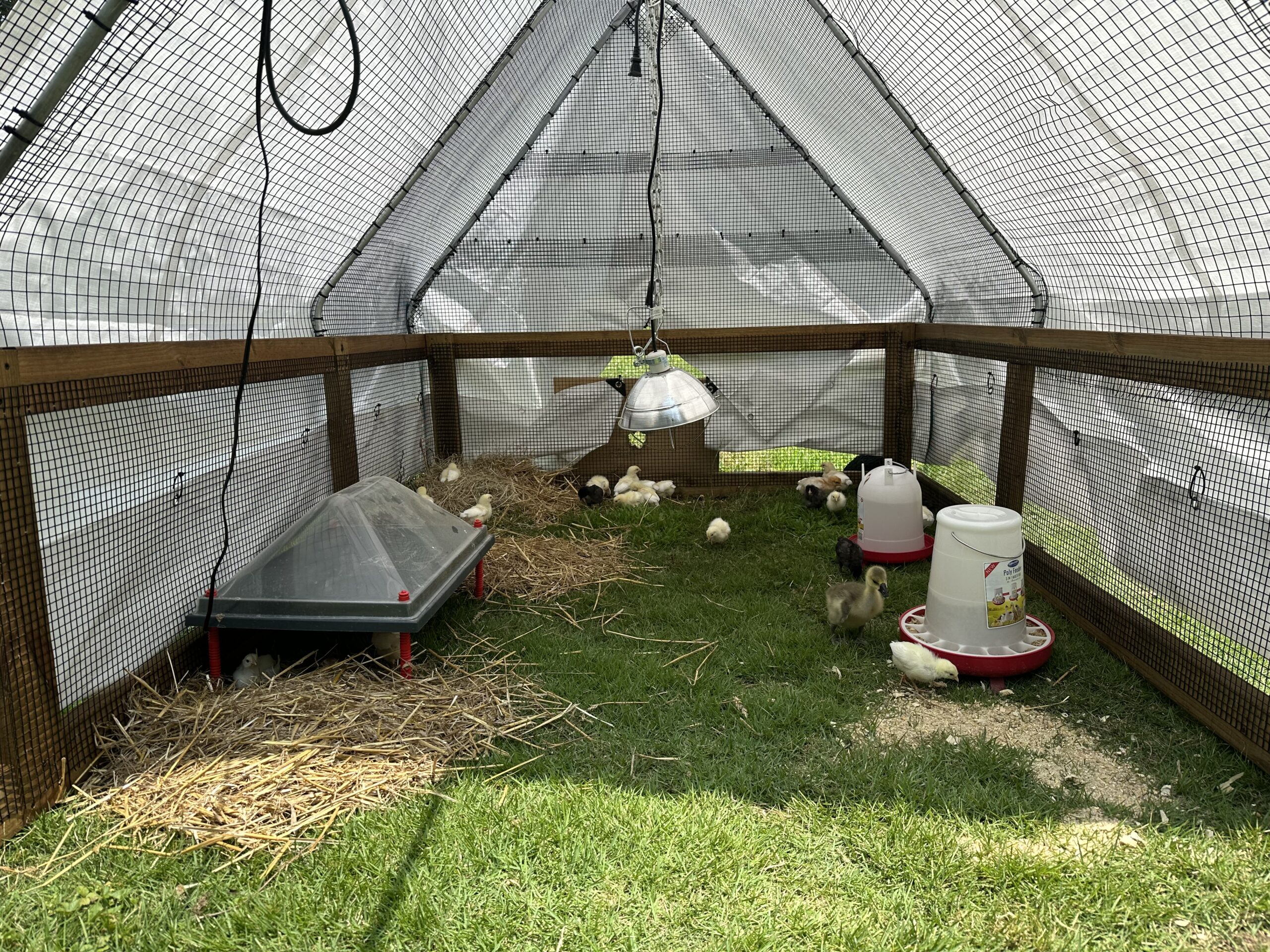
After years of trial and error, talking to other homesteaders, and learning from large-scale pastured poultry farmers such as Joel Salatin, here’s the ugly truth: locking up your chickens is the only surefire way to prevent losses from aerial predators.
I know how that might not be what you want to hear, especially if you envision a healthy and happy flock that roams around in your backyard or pasture, scratching, foraging and generally enjoying life.
Locking them up in a chicken coop with a covered run isn’t the same as letting them forage on fresh pasture. But I encourage you to think outside the box and build a mobile chicken tractor you can pull across the lawn. By doing so, your birds get access to fresh pasture daily, fertilize your lawn, and are protected from (aerial) predators. Everybody wins!
For our first flock, we used a chicken coop from Carolina Coops that was large enough to house 12 chickens. But since we wanted to pasture-raise our birds, we let them free range in our backyard during the day, resulting in many losses over the years.
In hindsight, we should have built a mobile chicken tractor like the one we built for pasture-raising meat birds. Later, we discovered it’s also an excellent way to get birds out of the brooder and onto fresh pasture sooner.
When we move to our new property in 2025, we’ll exclusively leverage mobile infrastructure instead of permanent chicken coops.
Eight Ways to Help Reduce the Odds of Aerial Predator Attacks
While the only surefire way to prevent losses from predatory attacks is to lock up your chickens, there are many things you can do to reduce the risk.
That’s because all predators are opportunistic and usually prioritize easy prey. Your job is to make it more difficult for a hawk or an owl to grab one of your chickens than to catch a squirrel, rabbit or wild bird.
1. Increase Your Flock Size to 500+ Birds
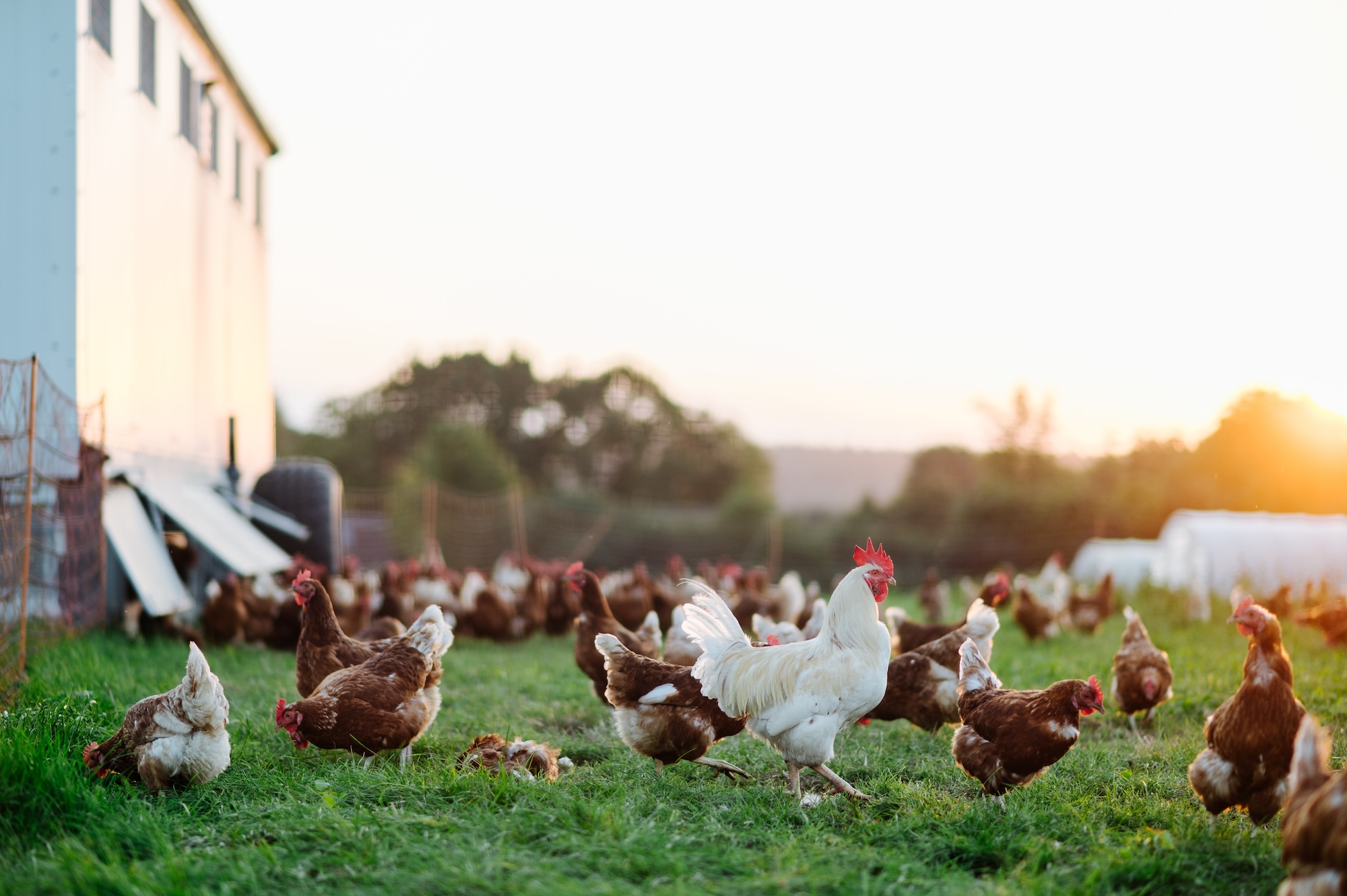
Almost all predators are opportunistic and get intimidated by large flocks. So if you can afford to raise several hundred birds in a single flock on an open pasture, there’s a good chance you won’t suffer from losses inflicted by predatory birds.
Of course, most homesteaders have neither the desire nor the space to raise that many birds. We currently have 36 egg-layers, which isn’t enough to intimidate predators.
2. Use Overhead Netting
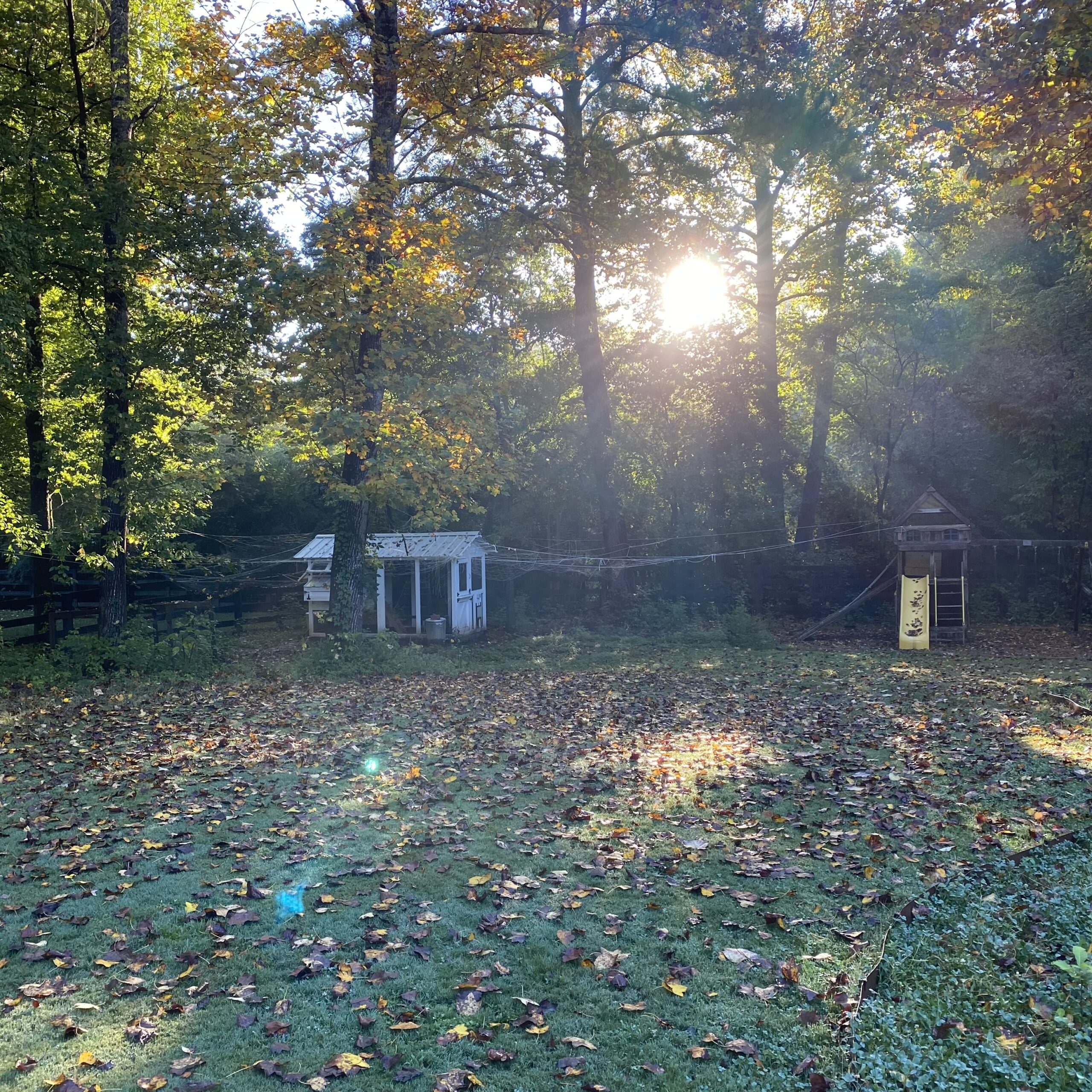
Installing overhead netting that prevents predators like hawks from swooping in can be incredibly effective. We successfully used a combination of regular bird netting and a special Hawk Stopper net we found on Amazon to prevent attacks.
The downside to overhead netting is that you have to cover the entire area where your chickens roam. You also have to remove any fallen leaves and branches, and there are ongoing repairs required (i.e., when any piece of the netting breaks).
Plus, you’re effectively locking up your birds by using fencing on the perimeter and netting overhead. That’s fine if you can cover a significant area, but it likely prevents you from implementing pasture rotations to keep your property in good condition.
We ultimately removed our netting because we didn’t like how it looked. Plus, it started sagging under the weight of fallen branches and leaves, and thus became too maintenance intensive to deal with.
Some chicken owners use fishing line to create a mesh-like net across their chicken yard. We tried that but decided not to pursue it because fishing line deteriorates quickly, and we didn’t want pieces of nylon all over our backyard.
3. Use a Fly Puppet Dancer

After losing three pullets to a persistent hawk within a span of a few days, we installed a fly puppet dancer to scare away daytime predators.
The advantage of fly puppet dancers over traditional scarecrows is that they move erratically, thus increasing their effectiveness at keeping predators at bay.
When we first turned on the machine, all our birds, including our two guard geese, bolted. And our German Shepherd attacked the monster and tried to rip it into pieces.
However, within a few days, everyone got used to our new guest and stopped paying attention. We haven’t had a hawk nearby since then, but that’s likely because hawks are migratory birds and don’t always hunt in the same area.
Even in the past, we’ve had weeks or months without any close encounters. I suspect that over time, any predator who hung out in the area for long enough would get used to the puppet dancer, just like our animals did.
The other issue with this gadget is that its coverage area is limited. So, if you have a large paddock or backyard, you might need several devices to keep predators away from your chickens.
Lastly, larger birds of prey (e.g., red-tailed hawks) might not be intimidated by a puppet dancer.
The other day, when I heard our rooster sound the alarm bell, I ran down and saw a giant hawk sitting in front of him. The rooster was trying to protect a group of scared hens. I ran up to the hawk, which turned around and spread its wings, trying to intimidate me.
Only when I tried to grab the hawk did it jump onto a nearby fence. In retrospect, I’m lucky that I won this battle because its sharp talons could have inflicted serious injury if it decided to attack me.
4. Get a Rooster
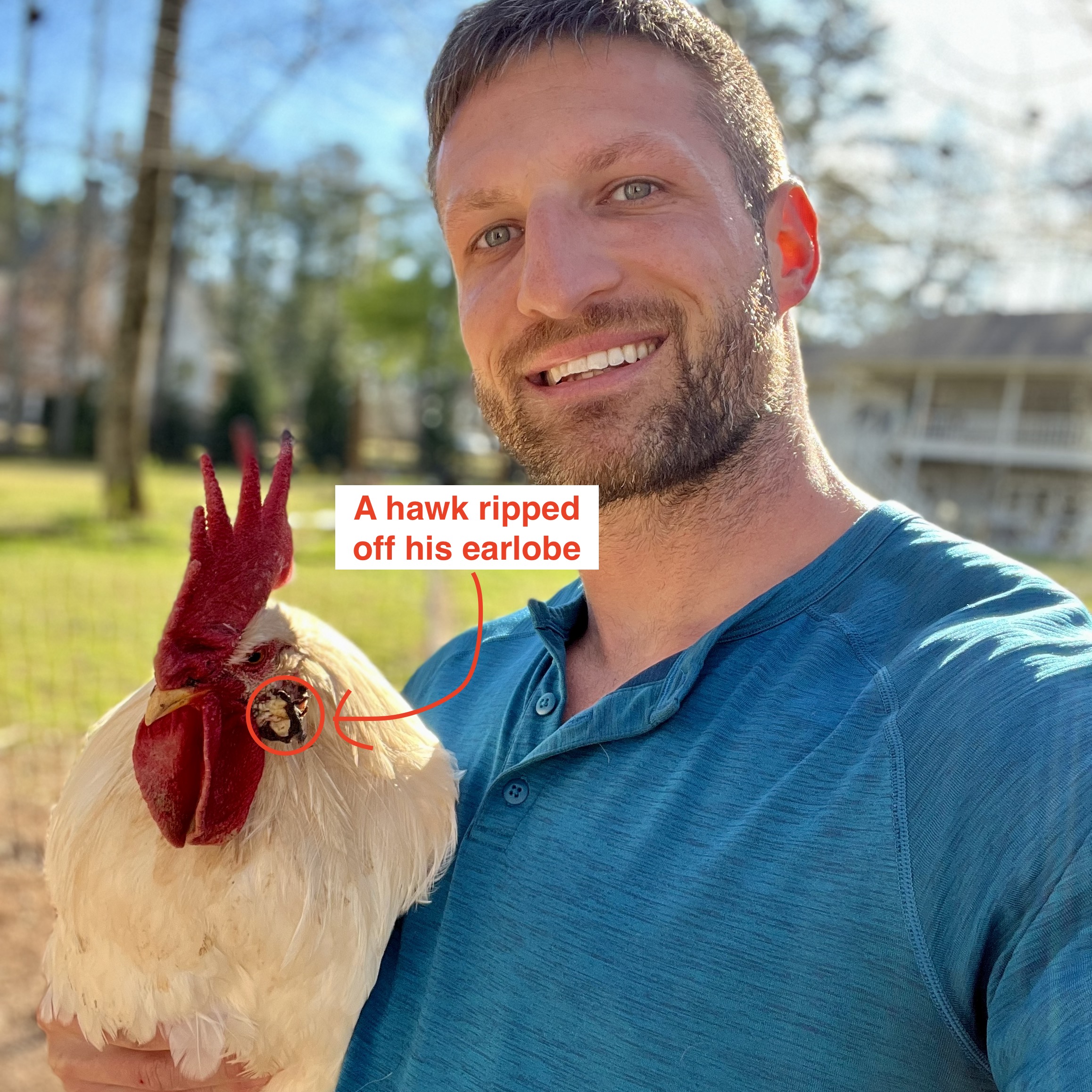
When we got our first flock of egg layers, we didn’t want a rooster to disturb our neighbors. Even though we live in an area that is zoned for agricultural use, it’s still a residential area. However, one of our hens, named Rosie, turned out to be a rooster. So we renamed him Cacique and were happy to have a dedicated protector for our flock.
Cacique — named after the national alcoholic beverage of Costa Rica — turned out to be a good predator deterrent, and even got into fights with hawks that required medical attention. But despite his best efforts, he couldn’t prevent two hens from getting killed.
I attribute that to the fact that our hens often spread out so much that he couldn’t cover them all. As a result, we were considering getting more roosters to cover a greater area. Of course, having multiple roosters within a single flock can be problematic because they might fight and injure each other.
We recently got two more flocks with two roosters each, but we’ll have to see how that works out and whether or not we’ll have to cull some of them.
The potential downside to roosters is that they can be aggressive (even to humans). We recently had to retire Cacique when he started attacking family members. Needless to say, it was a sad day at the Kummer Homestead because I liked him and appreciated his protective attitude.
5. Get a Guard Goose
A guard goose is a viable alternative to a rooster. Geese are very alert, and they make a lot of noise if they detect anything unusual. That’s why we recently raised two African geese with 25 chicks; so the geese would be part of the flock to protect it.
It’s only been a few months, but they seem to be doing an excellent job of alerting the flock to danger.
However, while our geese are larger and louder than our rooster, they’re also less aggressive, and they won’t get into fights. In other words, they’re good at sounding the alarm bell, but they eventually run for cover instead of getting between the hens and the attacker.
The problem is that hens seem to take a rooster’s alarm call more seriously than a goose’s. We’ve had several occasions where the geese sounded the alarm, but some of the hens didn’t care and continued foraging.
The bottom line is that you shouldn’t expect a guard goose to offer 100% protection from aerial predators.
6. Provide Sufficient Cover
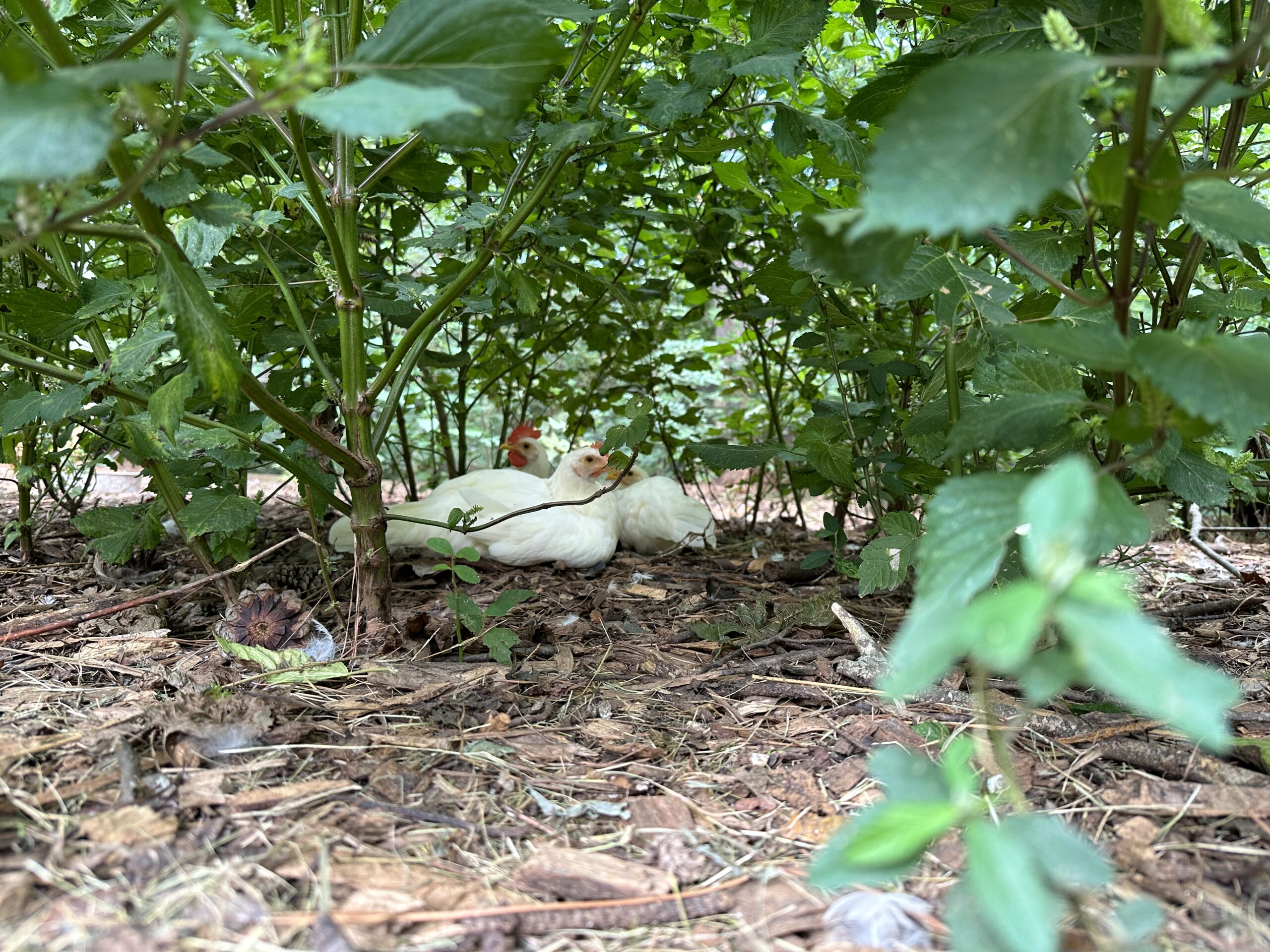
Regardless of who or what sounds the alarm, providing your chickens with sufficient cover they can hide under is critical. The quicker access to cover your chickens have, the less likely they are to get killed by an aerial predator.
Chickens are particularly vulnerable while they eat or drink, which is why we try to keep the feeders covered, or at least position them close to bushes or structures that the birds can hide in. (We use CoopWorx feed silos.)
Depending on the size of your paddock, it might make sense to build a makeshift cover out of old pallets and scrap wood, which you can position strategically around the pasture. Considering that our chickens have access to areas with zero natural cover (e.g., bushes or brush), we’re building a couple of coffee-table-like structures for them to hide under.
Of course, cover is only effective if the chickens see the threat ahead of time and are able to hide. If a hawk or an owl swoops in undetected, the best cover in the world won’t help much.
7. Get a Livestock Guard Dog
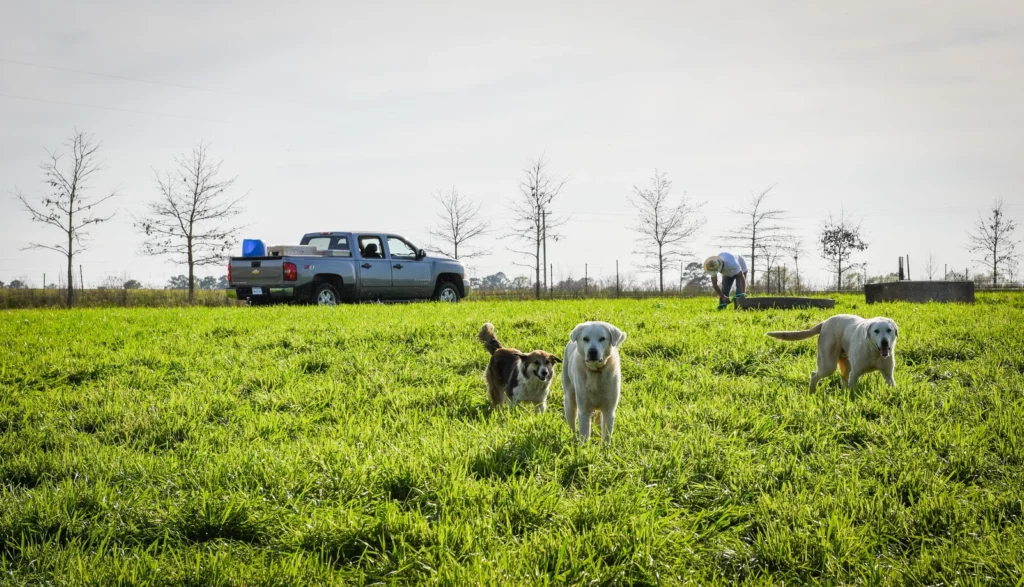
Livestock guard dogs are excellent for protecting your flock against most predators. However, based on feedback from farms that deploy guard dogs, they seem to be most effective against land predators, such as mountain lions, coyotes, foxes, weasels, skunks, possums and raccoons.
Their success rate with flying predators is mixed. That’s because often, an aerial attack happens so quickly that the dog might only scare off the attacker after it has already killed the bird (which usually happens upon impact).
I suspect the main issue with using dogs to protect chickens (and other poultry) from flying predators is that they can’t smell the attacker until it’s too late.
We’re considering getting a guard dog to protect our livestock (including our chickens) from land-based predators, especially at night. We realized the need for this when one of our chickens that didn’t make it into the coop got killed by a raccoon.
We trapped, killed and ate the raccoon a few days later, but eradication seldom works. And besides, raccoons play a vital role in the ecosystem by serving as gardeners, pest control, and the clean-up crew.
On a side note, we have a German shepherd who gets along great with all of our animals, but he is better equipped through genetics and training to guard us and the house as opposed to our livestock.
8. Invite Barn Owls to Move In
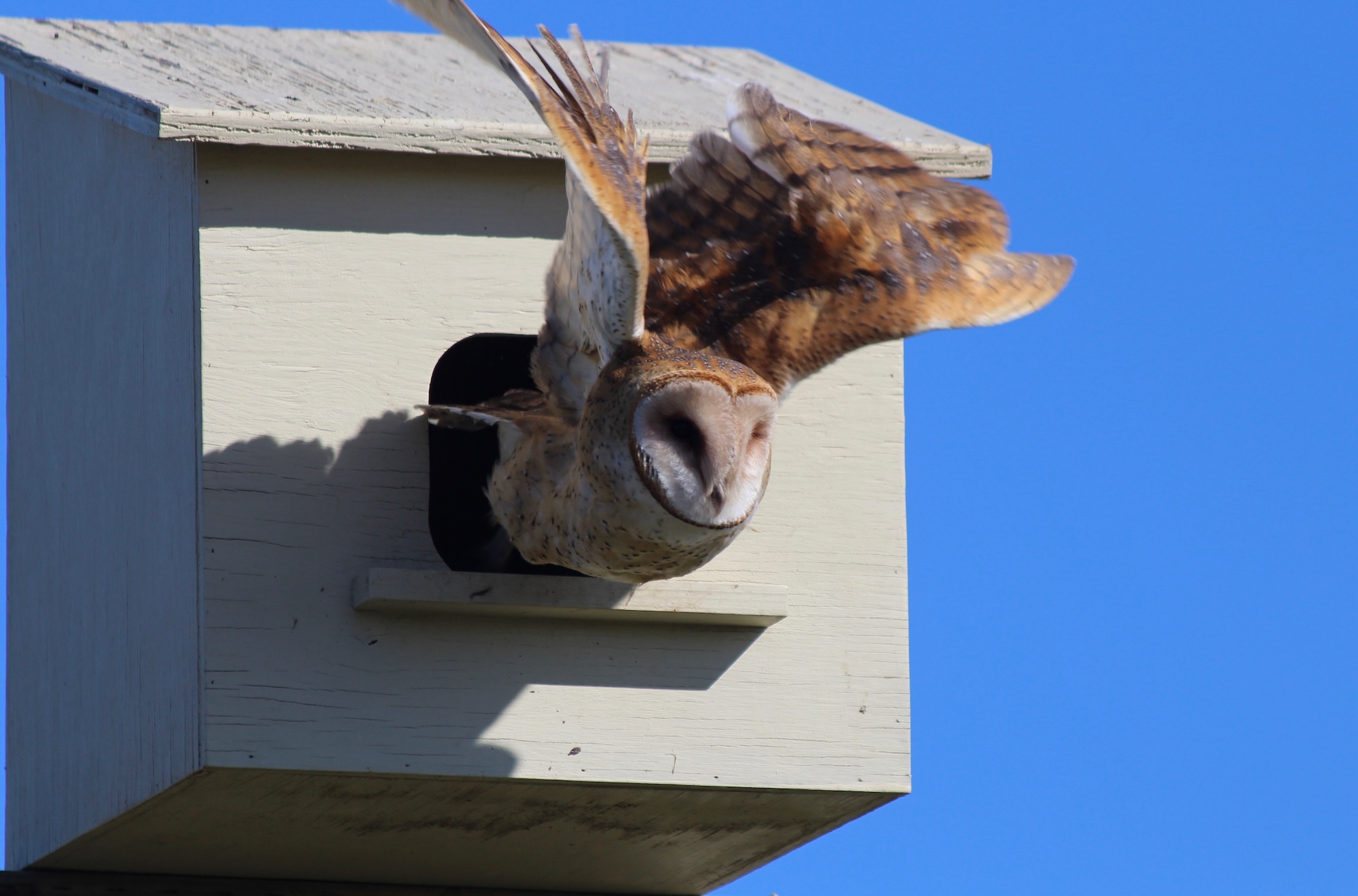
While inviting barn owls onto your property might sound counterintuitive considering that they’re also predators that love eating chickens, they hunt hawks and are predominantly nocturnal.
So, if the primary aerial predators in your area are hawks, setting up barn owl boxes on your property to encourage them to move in might reduce the hawk population.
I suspect we’re too close to the city to attract many barn owls, but we’ll set up a few boxes for them to nest when we move to our new homestead.
Aerial Predator Deterrents That Probably Won’t Work
Like some of you, we’ve also experimented with several methods that turned out to be ineffective at deterring aerial predator attacks, including the following:
Hanging Shiny Objects Around the Chicken Yard
Hanging dozens of compact disks on strings, or placing yards of reflective tape across the chicken yard, looks awful. But it also doesn’t seem to be effective. The idea is that sunlight, reflected by the CDs, deters aerial predators. But flying predators either don’t care, or they get used to it. More importantly, I wouldn’t want to look at a bunch of old CDs hanging in my yard every day.
Scarecrows or an Owl Decoy
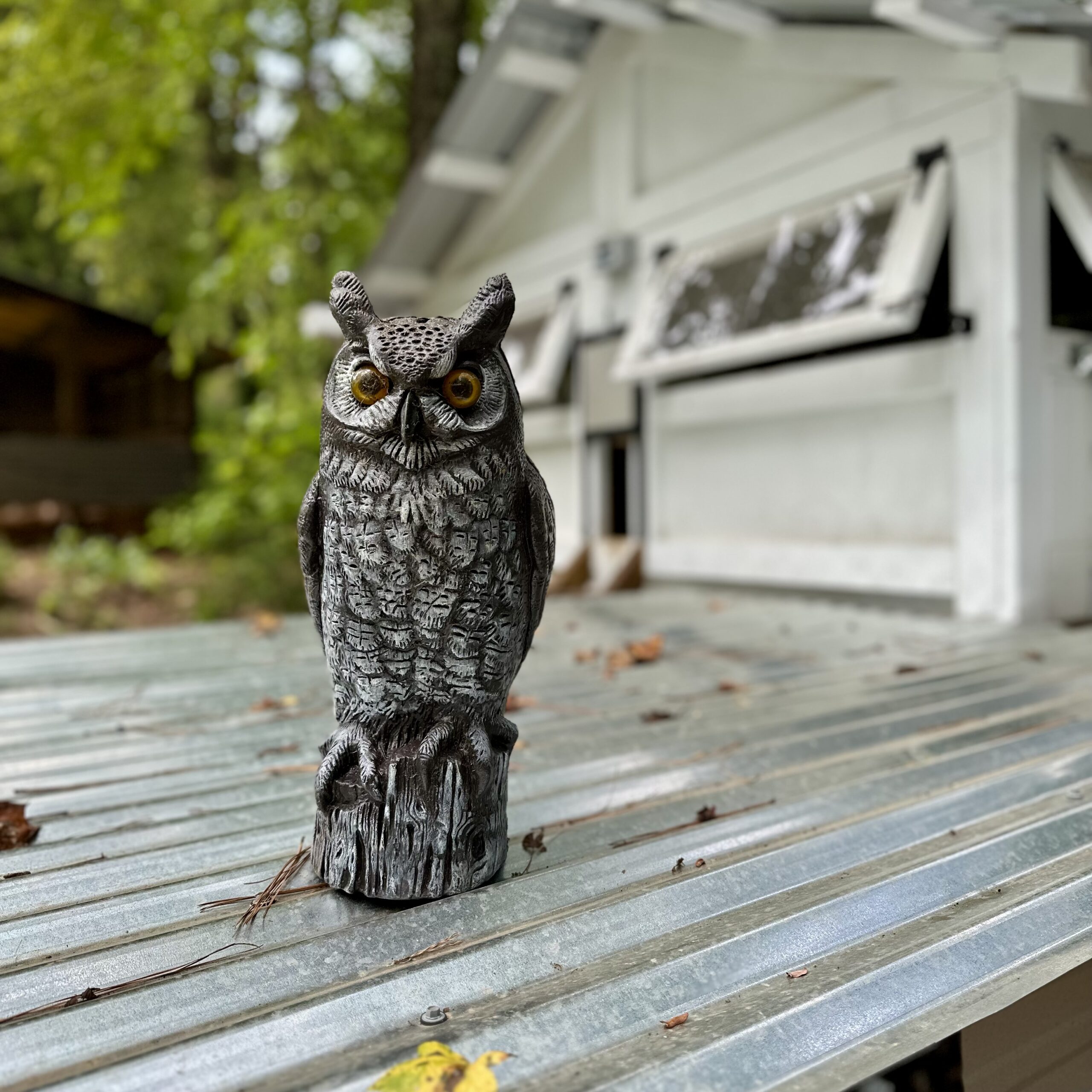
The idea of having an owl decoy sitting near the chickens is to deter hawks, because owls hunt hawks. But no stationary deterrent will keep aerial predators away. We had a plastic owl in our backyard that we moved around every few days so that hawks wouldn’t get used to it, but we lost several chickens despite it.
Adding a Black Chicken to the Flock
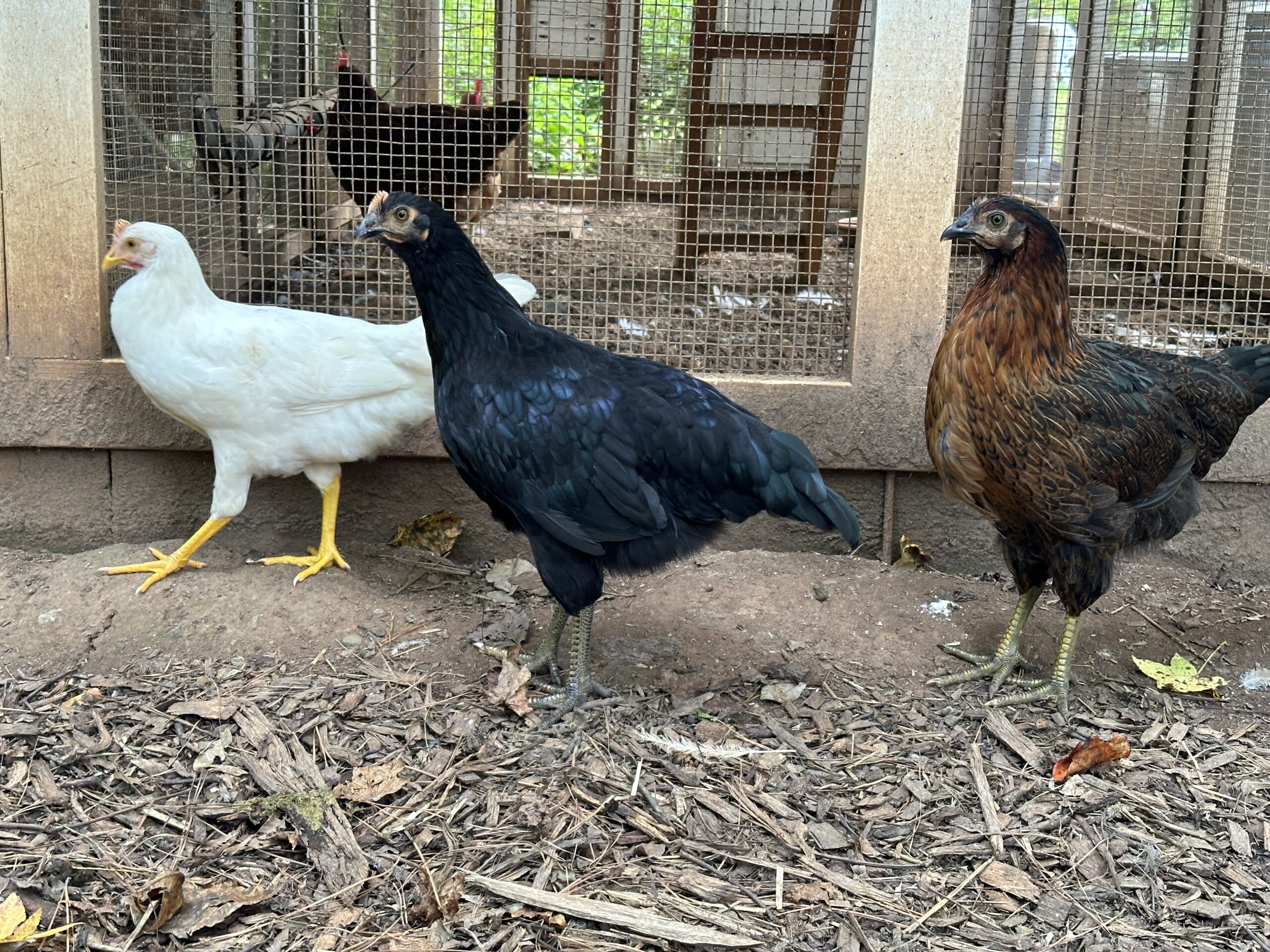
Some people believe that flocks that include black chickens are less likely to be attacked by aerial predators because they could be mistaken them for crows or ravens, which are natural enemies of hawks, owls and other smaller birds of prey.
We currently have four black chickens in one of our flocks, which initially had 25 birds. Three of our baby chicks got killed anyway, but not the black ones. So maybe there is a case to be made for having only black birds. But merely having them as part of the flock doesn’t prevent losses.
Raising Large Breeds
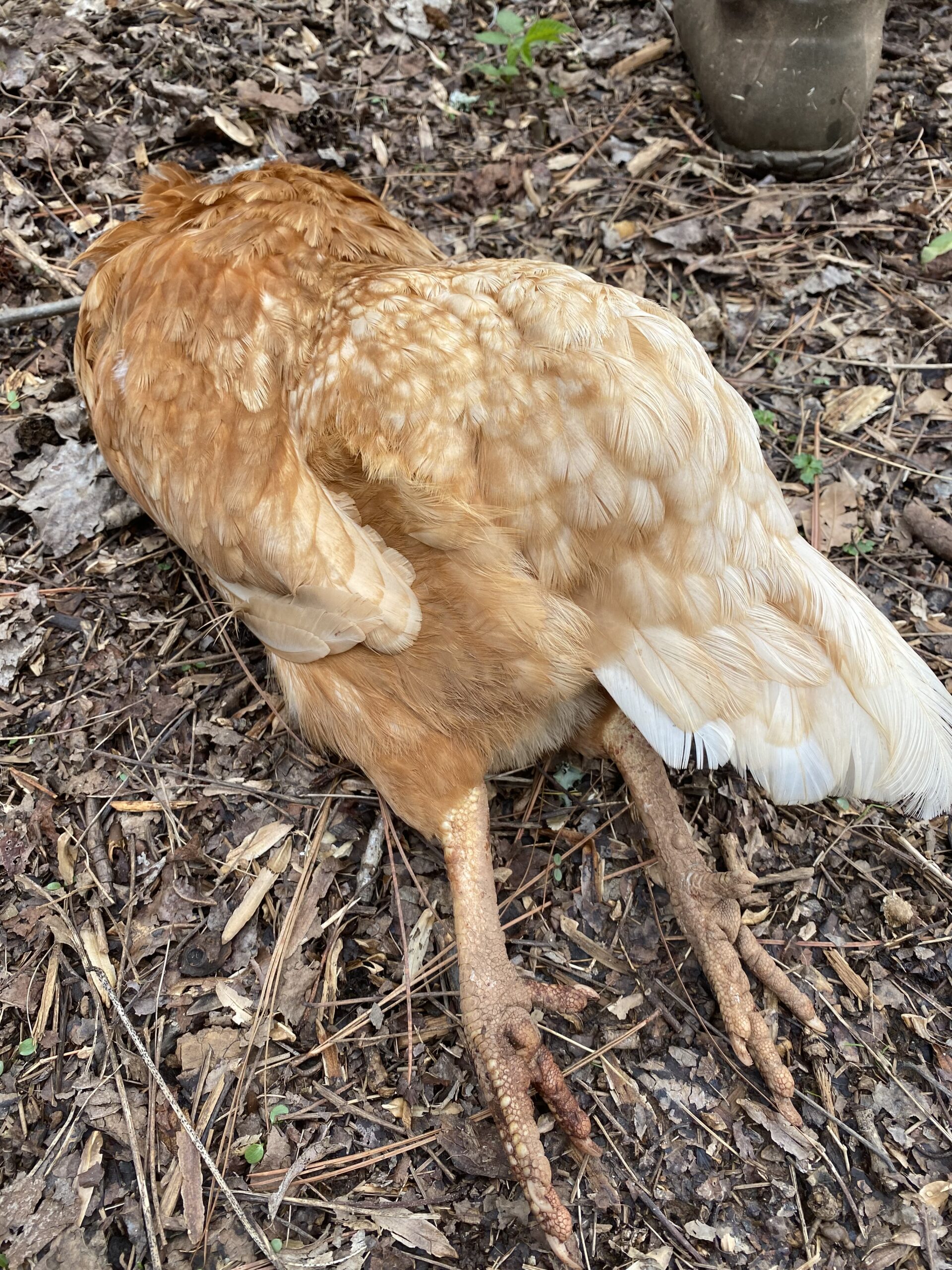
I once believed that larger birds (as opposed to smaller breeds like bantams) were less likely to be killed by hawks because predators can’t fly off with a heavy carcass in their claws. Unfortunately, hawks don’t consider that a problem; when they kill a chicken (regardless of its size), they eat the bird onsite instead of trying to bring the carcass back to their nest.
What Else You Should Consider
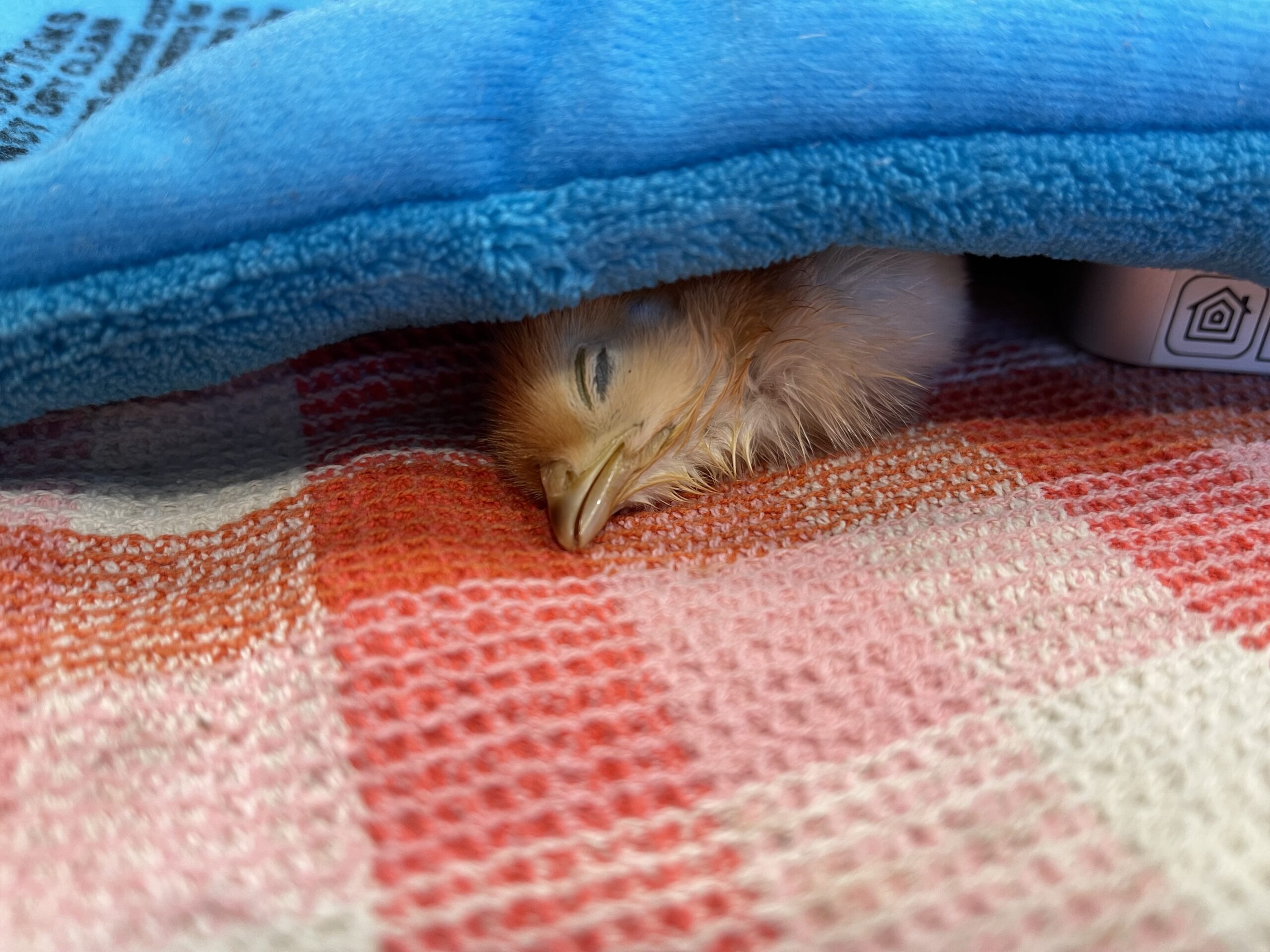
I think it’s crucial to understand that occasional losses are a normal part of raising any livestock. You’ll likely experience your first losses after receiving chicks from your hatchery. Not all of them make it in transport, and some more might die during the first 48 hours.
When we got our first batch of chicks, one died on the second day, and we were devastated. When we lost our first laying hen to a hawk, we were devastated again, because we felt we had failed to protect our animals. It’s been a few years since then, and we no longer get upset when a predator kills a hen. We’ve realized it’s part of the natural cycle.
What I’m trying to say is that while it is your responsibility to keep your flock safe, there is only so much you can do. We used to have 15 egg-layers and a rooster to provide our family with fresh eggs every day. Currently, we have 40 birds, including two roosters and two geese. By having so many, we can afford the occasional loss without having it disrupt our egg supply.
We still let some of our birds free range in our backyard, hoping the roosters and geese will keep an eye on the sky. We’ll likely do the same on the new homestead, while also using mobile infrastructure instead of stationary coops. Ultimately, we’ll test both approaches and see which one works the best.
Frequently Asked Questions
No, absolutely not. Hawks are protected by federal law under the Migratory Bird Treaty Act (MBTA). So you’re not allowed to kill or harm them, even if they have already killed several of your birds. Plus, eradication never works anyway. If you kill one predator, another one will move in — sometimes, with unforeseen consequences.
For example, according to the U.S. Fish & Wildlife Service, gray wolves were eliminated throughout most of the United States during the early 1900s as part of predator-control programs. Unfortunately, removing the wolves allowed other predators (that used to be prey for wolves) like coyotes, raccoons or weasels to fill their spots.
Hawk netting can be incredibly effective because it offers a physical barrier. However, remember that smaller birds of prey (e.g., the sharp-shinned hawk) might be able to fit through, depending on the mesh size.
Additionally, predatory birds can fly under the net, and will exploit any openings that may exist. So you have to close off any large openings and use fencing to deter predators from flying in under the net.
We’ve had hawks land on an adjacent fence and then hop down to get under the net. When we realized what was happening, we attached the end of the net to the top rail of the fence.
Our coop’s chicken run is made with hardware cloth, but any welded wire or chicken wire will do to keep flying predators out. We decided to use black, half-inch hardware cloth, because this will also keep critters out and because it’s less reflective than regular welded wire (making it easier to see through it).
Final Thoughts
Providing a safe place for your free-range chickens isn’t easy, considering that everyone, including aerial predators, recognizes how good these birds taste.
After years of trial and error, we’ve concluded there are only two effective strategies: lock your chickens up or accept the occasional loss.
The more chickens you have, the easier it is to deal with losses. However, if you have only a handful of chickens and treat them more like pets than livestock, I’d encourage you to keep them in a predator-proof run or a mobile chicken tractor.
But now I’d like to hear from you! Do you have hands-on experience with any of the methods mentioned in this article? Share your experience by leaving a comment below.
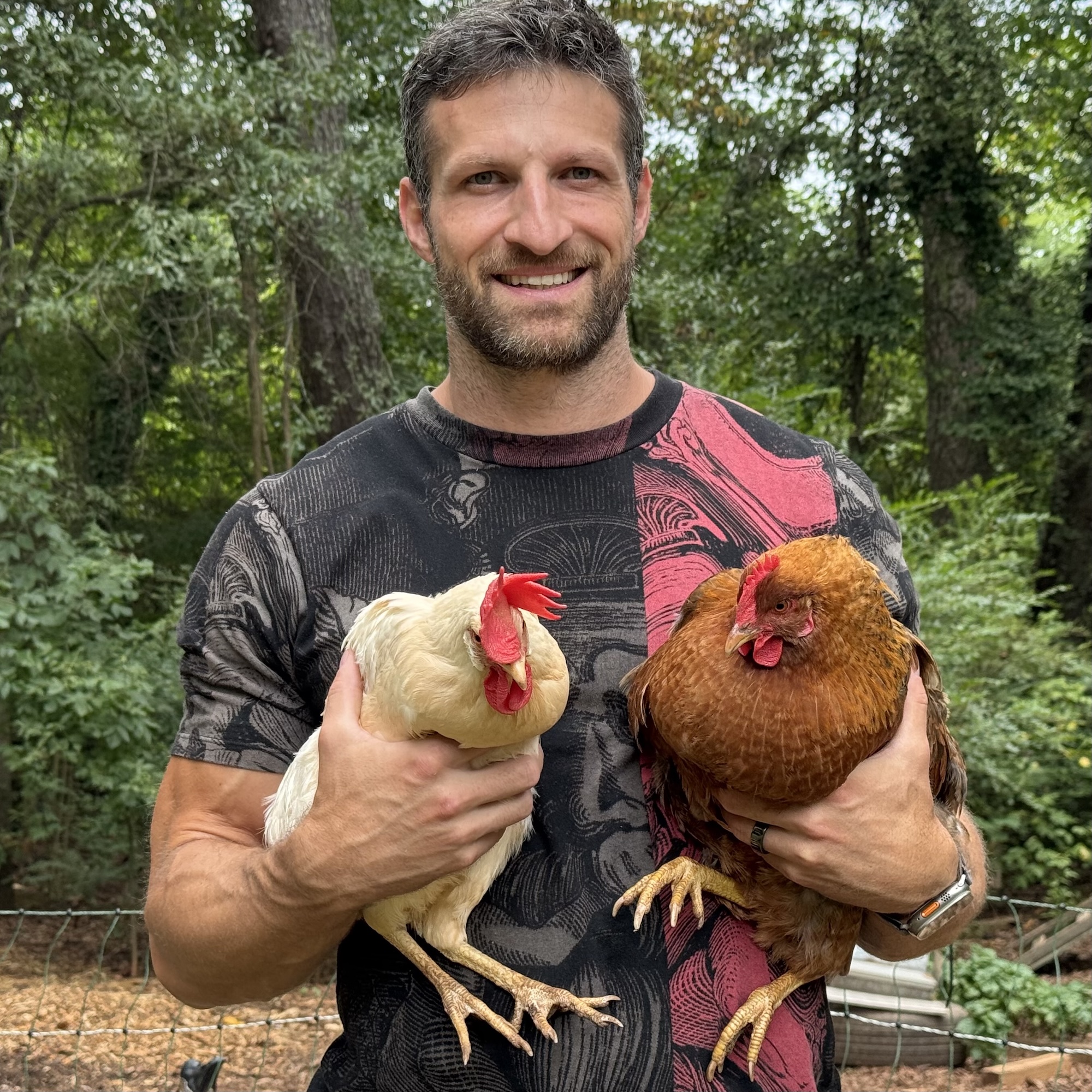
Michael Kummer is a healthy living enthusiast, the founder of MK Supplements and the host of the Primal Shift podcast. His goal is to help people achieve optimal health by bridging the gap between ancestral living and the demands of modern society. He runs the Kummer Homestead with his wife Kathy and their two children.
